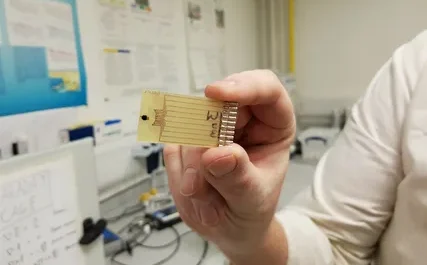Researchers at the Eye Clinic of the University Hospital Bonn (UKB) and the University of Bonn have conducted a study testing optical coherence tomography angiography as a new imaging method for monitoring intermediate uveitis, a rare inflammatory eye disease. The results of the study, published in Scientific Reports, suggest that this method could be used to monitor the disease and identify patients at risk of a future worsening of the disease.
Intermediate uveitis is a form of uveitis that primarily causes inflammation of the vitreous body in the eye. However, it can also lead to inflammation of the retinal vessels. The severity of the inflammation and the blood flow in the retinal vessels are closely related. By using optical coherence tomography angiography, which enables non-contact and non-invasive examination of the retina and the underlying choroid, the researchers were able to detect the blood flow and make conclusions about the blood supply to the retinal vessels.
Dr. Maximilian Wintergerst from the UKB Eye Clinic, who also conducts research at the University of Bonn, explains the importance of recognizing an increase in inflammatory activity in the early stages of the disease. Early detection allows for timely adjustment of treatment, which can help preserve visual acuity and prevent further complications. However, current methods for assessing disease activity are subjective and not always reliable.
The use of objective markers, such as optical coherence tomography angiography, could significantly improve monitoring and provide quantitative endpoints for future clinical trials. In the study, the researchers analyzed the blood flow density of the central retina in 52 study participants with stable disease, increased disease activity, or decreased disease activity. They found that an increase in disease activity was associated with a decrease in blood flow density, while a decrease in disease activity was associated with an increase in blood flow density.
These findings suggest that optical coherence tomography angiography can provide valuable information about the severity of inflammation and the future course of the disease in intermediate uveitis. By monitoring the blood flow in the retinal vessels, doctors may be able to identify patients at risk of a worsening of the disease and adjust treatment accordingly. This could potentially improve outcomes for patients with intermediate uveitis and contribute to the prevention of blindness caused by uveitis worldwide.
Note:
1. Source: Coherent Market Insights, Public sources, Desk research
2. We have leveraged AI tools to mine information and compile it




